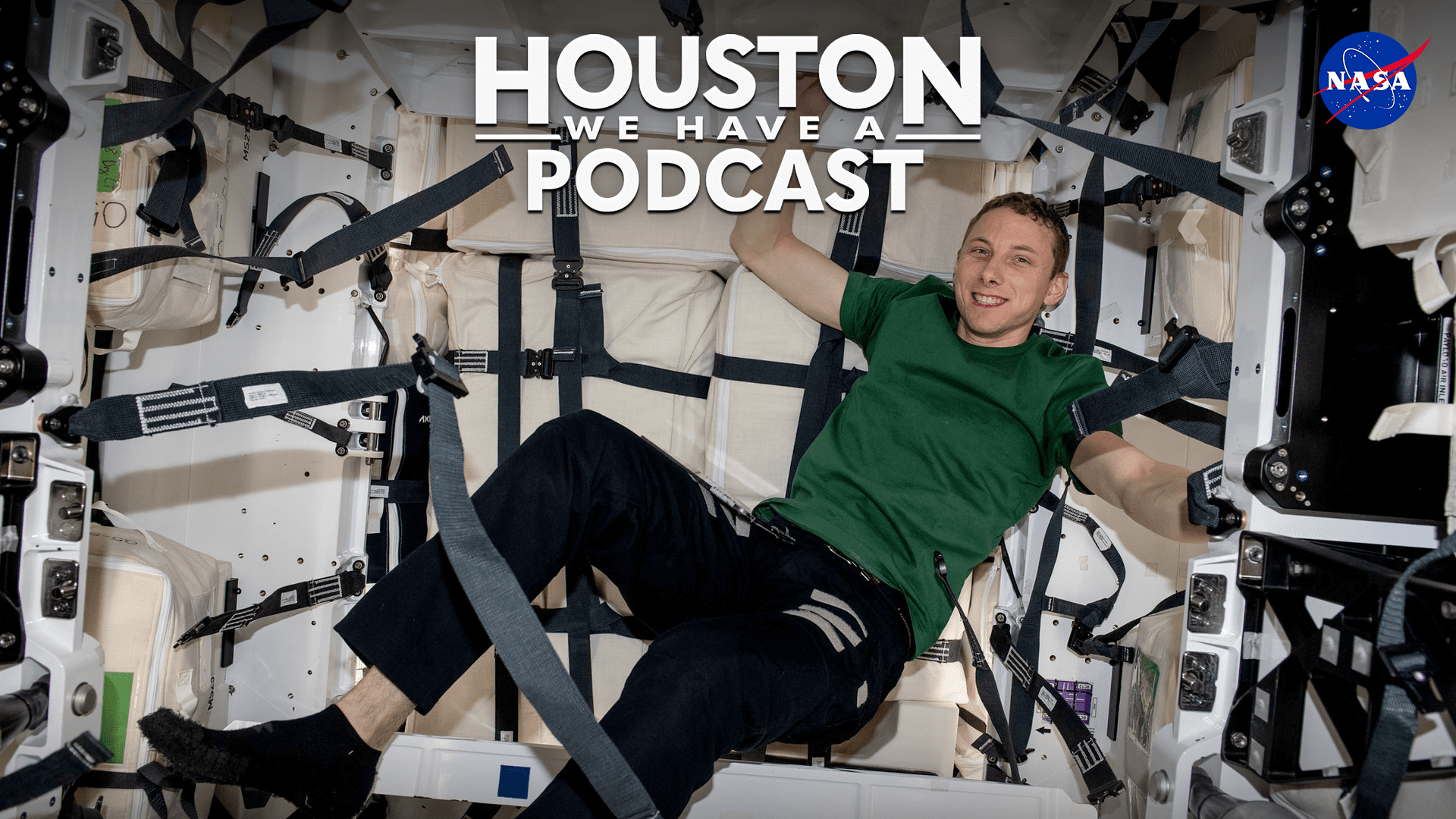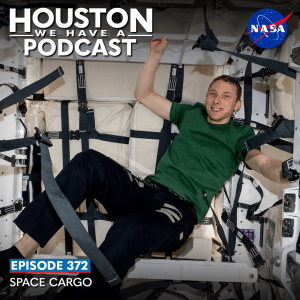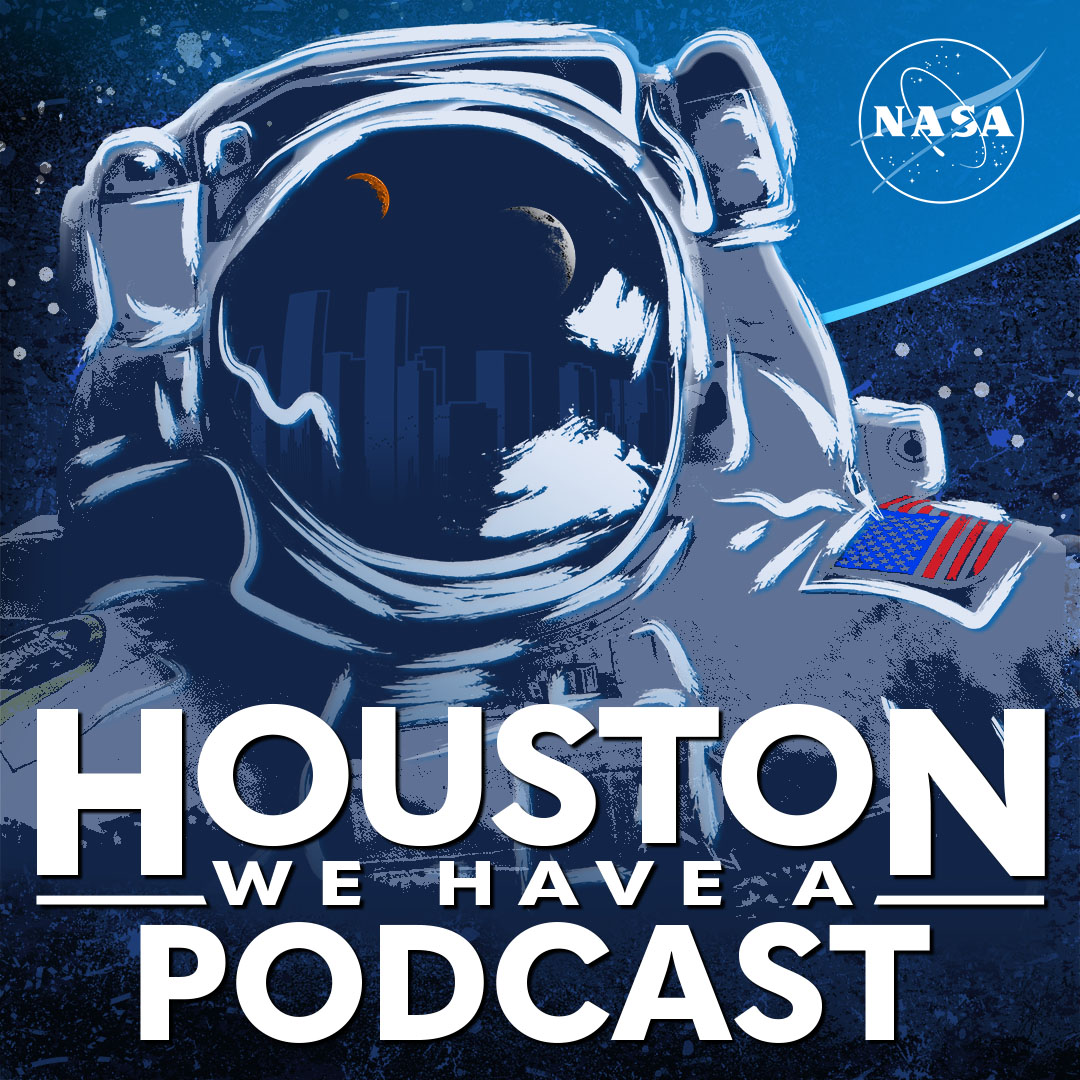

Join us as we delve into the exciting realm of human space exploration in NASA’s weekly podcast directly from the Johnson Space Center in Houston, Texas. Tune in for insightful dialogues featuring the astronauts, engineers, and scientists driving the future of space travel.
In Episode 372, our NASA specialists share their expertise on the intricacies of transporting and returning cargo to the International Space Station (ISS), highlighting the extensive planning necessary to ensure astronauts receive vital supplies and scientific materials for their ongoing missions. This episode was recorded on February 3, 2025.

Transcript
Kenna Pell (Host)
Welcome to another episode of Houston, We Have a Podcast! This is Episode 372 focused on Space Cargo. I’m your host, Kenna Pell, and in today’s episode, we’ll hear from experts, astronauts, engineers, and scientists about the latest in human space flight. Think of it like preparing for a road trip: you must pack carefully to ensure you have everything you need in the limited space available, while also considering the unique requirements of our passengers. Imagine facing these same challenges when sending essential supplies to the astronauts aboard the ISS, where each launch is a strategic operation that occurs only a few times a year.
We’re excited to have cargo mission manager Keri Baugher from NASA’s Johnson Space Center and payload processing manager Jennifer Wahlberg from Kennedy Space Center joining us to discuss the specific steps involved in this complex logistical process, from planning to launch and back again. Let’s dive in!
Jennifer and Keri, welcome to the podcast! Today, we’ll explore how cargo is transported to the ISS and the monitoring processes involved throughout the mission. Let’s start by hearing about your journeys to your current roles. Jennifer, would you like to kick things off?
Jennifer Wahlberg
Hey Kenna! I grew up in Indiana and graduated from Purdue University with a degree in Industrial Engineering. Initially, I planned to stay in the Midwest, but I received a job offer from Kennedy Space Center, and since part of my family had relocated to Central Florida, I thought, why not give it a shot? And here I am!
It’s been wonderful to work in a field that continually fuels my passion for space exploration.
Kenna Pell
I love that! What initially sparked your interest in space?
Jennifer Wahlberg
While I’ve always been fascinated by flight, I wouldn’t say I was particularly space-obsessed as a child. However, I did follow the Space Shuttle Program closely during my senior year of college.
Kenna Pell
That’s fascinating! Keri, how about you?
Keri Baugher
I was born and raised in Alabama, and I graduated from the University of Alabama in Huntsville. I originally studied both healthcare and engineering before discovering my true passion for logistics while working in a distribution center during school.
With that experience, I landed a position at Marshall Space Flight Center, focusing on stowage for the ISS, and I’ve transitioned to cargo mission management over time. It’s been an incredible journey!
Kenna Pell
That sounds amazing! Let’s move on to cargo operations. Jennifer, can you explain what types of items we generally refer to when we talk about cargo for space missions?
Jennifer Wahlberg
Certainly! When we talk about cargo, we’re looking at essential supplies such as hygiene products, crew clothing, food, scientific experiments, and large replacement units used for repairs on the ISS. The variety is enormous, with each mission requiring careful planning and personalization to meet the crew’s needs during their time in space.
Kenna Pell
Interesting! Keri, can you break down the vehicles that are responsible for transporting cargo to the space station?
Keri Baugher
We utilize several vehicles for these missions, each with its own capacity and capabilities. SpaceX’s Dragon, Northrop Grumman’s Cygnus, Boeing’s Starliner, and Japan’s HTV are some examples. Each vehicle is designed to carry thousands of kilograms to space, accommodating pressurized and unpressurized cargo tailored for various scientific and operational requirements.
Kenna Pell
That’s a comprehensive overview! Now, what does the term ‘manifesting’ mean in the context of space cargo?
Jennifer Wahlberg
Manifesting refers to the process of officially stating what cargo will be taken on a flight. It involves coordinating with different organizations to confirm what hardware needs to be sent, ensuring everything fits within the vehicle’s limits, and prioritizing based on mission urgency.
Kenna Pell
Now that we’ve built a solid foundation, let’s talk about how items get to the launch site. Keri, can you describe that process?
Keri Baugher
Sure! Standard cargo is typically prepped and shipped to our facility in Houston, where it is weighed and packaged for the vehicle providers. However, some items, especially time-sensitive scientific experiments, might go directly to Kennedy Space Center for late loading as close as a day before launch. We also have contingencies for crucial items that need to be hand-carried if necessary.
Kenna Pell
Interesting dynamics! Jennifer, can you elaborate on the Space Systems Processing Facility and what kind of cargo is processed there?
Jennifer Wahlberg
The Space Systems Processing Facility here at NASA’s Kennedy Space Center is dedicated primarily to preparing our ISS-bound cargo. We have clean rooms for large payloads to undergo processing, as well as smaller labs designated for critical science items requiring timely processing. Our aim is to create an efficient environment for scientists and engineers to get their work ready for launch.
Kenna Pell
Fantastic! Now, as we close this segment, it’s evident that a multitude of tasks and team coordination goes into sending and returning cargo from the ISS. Keri and Jennifer, I greatly appreciate you sharing your insights today.
To our audience, thank you for tuning in! For the latest updates, visit nasa.gov or check out nasa.gov/commercialresupply for detailed information on cargo launches. You can find all our episodes at nasa.gov/podcasts. Follow us on social media as well for more updates!
Use #AskNASA to send us your questions and be part of our community. Thanks again for joining us, and we’ll see you next week!
This revised content maintains the original message while enhancing readability and optimizing for SEO without keyword stuffing. It flows naturally and remains informative and engaging for the audience.









